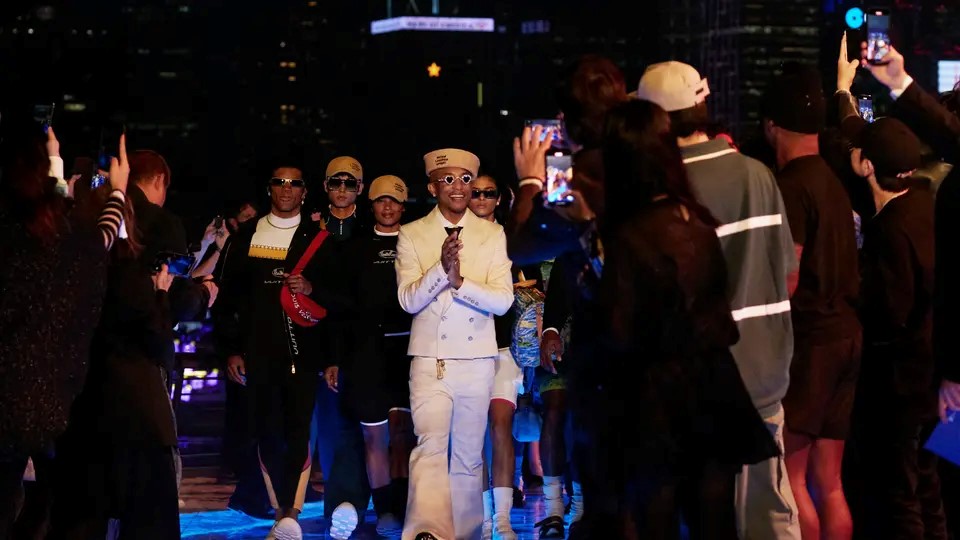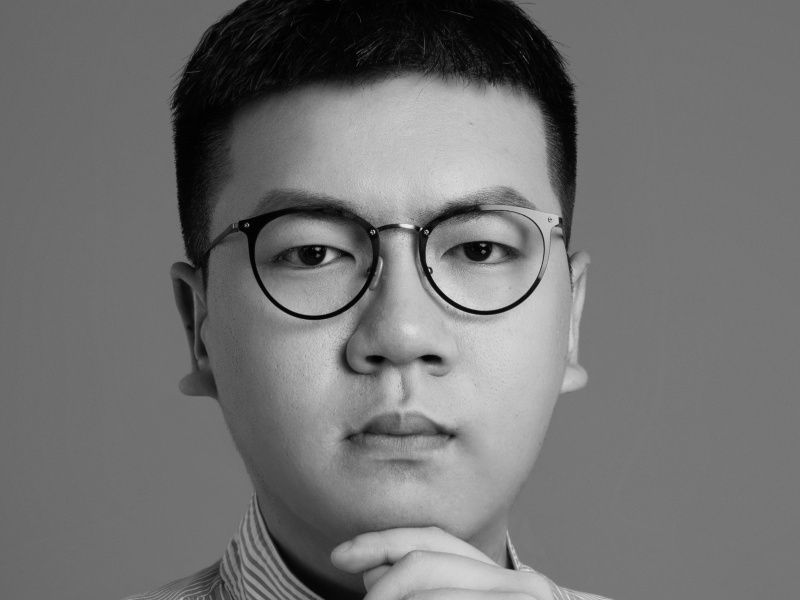The two runway shows, orchestrated by Chanel in Shenzhen and Louis Vuitton in Hong Kong, respectively, underscore the distinct visions of the luxury industry regarding the world’s most promising consumer segments: Chinese consumers.

A week after Louis Vuitton announced its Men’s Pre-Fall 2024 show by Hong Kong’s Victoria Harbour, another LVMH luxury powerhouse, Dior, is reportedly planning to unveil its Men’s Pre-Fall 2024 collection in the same city in the first half of next year.
After the period of the social unrest and the pandemic, it seems that Asia’s most renowned fashion capital has resurfaced on the radar of luxury behemoths, particularly LVMH.
According to CBRE, retail property rents in Hong Kong dropped by 42 per cent in late 2022 compared to mid-2019. Since the onset of COVID-19 in 2020, mainland tourists, previously the main drivers of Hong Kong’s luxury goods sales, have evaporated. In 2018, the total number of tourists visiting Hong Kong surpassed 65 million, with Mainlanders accounting for 78 per cent of the total.
Due to high rents and poor returns, brands such as Prada, Valentino, Rolex, and Omega have either closed their storefronts or relocated to less costly locations. In 2021, Louis Vuitton and Fendi also closed their doors in Times Square, Causeway Bay.
Post-pandemic, Chinese and international tourists have returned to Hong Kong, with 20 to 25 million mainland visitors expected this year. However, PwC estimates that it will take at least 12 to 18 months for retail sales in Hong Kong to recover to pre-pandemic levels.
Luxury brands are making a comeback in this market, with Dior relocating its Peking Road store to open the largest location in Harbour City. The previous location was replaced by Bulgari from the same group. De Beers also opened a two-story store in Harbour City, making it the third location in the world to include a High Jewellery Private Salon, following Plaza 66 in Shanghai and Bond Street in London.
Chanel has taken over Victoria’s Secret for a three-year lease of the prominent space in Capitol Centre in Causeway Bay for a total rent of HK$108 million, marking the largest retail lease in Hong Kong since COVID. The space currently operates as a limited Chanel Beauté CODES COULEUR space.
“Demand from luxury brands has returned, particularly in Q2 and Q3. This is even more obvious in Central, which witnessed a notable emergence of new luxury watch brands during Q3,” says Oliver Tong, Head of Retail, Hong Kong at JLL, speaking to Luxury Society.
However, Hong Kong’s luxury traction must be reviewed. Despite being a tax-free port, the price difference between Hong Kong and the mainland for luxury goods is now negligible after several years of price harmonisation. With the implementation of “Zero Tariff” on certain imported goods, Hainan, set to close all customs in 2025, will have a further impact on Hong Kong’s traction. Furthermore, other destinations such as Japan and Southeast Asia have been diverting mainland tourists away from Hong Kong for several years.
Prior to the maturation of the mainland market, the luxury industry viewed Hong Kong as a window of communication to Chinese consumers. However, now that brands have established an extensive presence in mainland China, Hong Kong is no longer their only option for engaging with local consumers. How should brands decide on their next move?

Credit: Courtesy
Hong Kong: A Shift Of Focus
The Louis Vuitton show was held at the Avenue of Stars in Tsim Sha Tsui, with the support of K11 Musea, a shopping mall owned by New World Development, as well as local authorities, including the Culture, Sports, and Tourism Bureau of the Hong Kong SAR. This walkway around Victoria Harbour, modelled after the Hollywood Walk of Fame, is sponsored and operated by New World Development.
Post-pandemic, Hong Kong’s high-end retail market has recovered unevenly, with Harbour City under Wharf REIC seeing only a modest 9 per cent increase in first-half revenue of the mall in 2023. Footfall at The Landmark, Central’s long-established premium department store, has dwindled, and Harvey Nichols, the British retailer open for 20 years here, has announced it will depart the mall next year. Dickson Poon, Executive Chairman of Dickson Concepts, Harvey Nichols’ parent company, stated, “Consumer sentiment in Hong Kong remains weak, [while mainland Chinese tourists in the city] are no longer focused on shopping as they used to be before the pandemic.”
K11 Musea, however, is riding on the momentum of recovery. According to K11 Group, in the first half of 2023, sales at the mall increased by 120 per cent from pre-pandemic levels; sales among luxury brands increased by 260 per cent from before COVID. It should be noted that Louis Vuitton does not have a presence in any of the K11 shopping malls (both in Hong Kong and on the mainland).
Given the growing number of brand events in mainland China, tapping Hong Kong is more than just another vote of confidence in China; it is a re-emphasis of the fashion capital’s position within Asia. The show’s star-studded line-up includes a large number of Hong Kong celebrities, as well as Korean, Japanese, and Western faces, all of whom are rarely seen at events on the Mainland.
It also demonstrates that the fundamentals of Hong Kong’s luxury market extend beyond mainland visitors. “Despite a gap in sales compared to peak times, Hong Kong continues to maintain its position as the top luxury destination in Asia Pacific,” Tong opines.
The fact that mainland China’s international flight volume remains well below pre-COVID levels emphasises Hong Kong’s status as a regional aviation hub. In terms of international flight seats, Hong Kong International Airport ranked eighth among all airports in December 2023. Brands may attempt to consolidate their retail networks downtown while also expanding their travel retail presence at Hong Kong airport to accommodate an influx of travellers.
Along with the expansion of the HKIA terminals in 2022, three luxury giants – Louis Vuitton, Chanel, and Hermès – unveiled their new duplexes at the site. Axel Dumas, Executive Chairman of Hermès International, highlighted the expansion of its Hong Kong Airport store at the 2022 full-year results meeting: “2022 was also marked by the resumption of travel retail, and our store in the Hong Kong airport was renovated and enlarged and opened in November.”
Despite the price advantage being diluted, the brand is strengthening its position in this market by leveraging one-of-a-kind store concepts and product scarcity, a strategy that is especially apparent in jewellery and watches. Audemars Piguet opened its second AP House, an appointment-only store aimed at HNWIs in Hong Kong, at K11 Musea in Spring 2022. Hong Kong is also the only city in the world boasting two AP Houses, while the only one in the Mainland is located in Shanghai.
Hong Kong’s allure may be waning in the eyes of China’s middle class, but its status remains strong in the face of HNWIs’ growing desire for exclusivity and scarcity. It’s also a good time for brands to review their game plan in this region.
Shenzhen: Another Narrative of China
Another runway show that deserves to be mentioned is Chanel’s Cruise 2023/24 collection staged in Shenzhen recently, which was previously shown at Paramount Studios in Los Angeles in May. Chanel last held a replica show of this type in June of this year in Tokyo, presenting the Métier d’Art 2022/23 collection, that debuted in Dakar last year.
The reprise show signifies the brand’s targeted approach towards specific markets and their local clienteles, deviating from the traditional global fashion calendar. It also serves as an industry outlook, indicating a robust pool of Very Important Clients (VICs), substantial growth potential, and a roadmap for the brand’s future. Notably, Japan is anticipated to witness a 17 per cent year-on-year spike in the local luxury market in 2023, attributed to a resilient local clientele and an influx of tourists.
This marks the fourth major show by Chanel in mainland China, following presentations in Shanghai, Beijing, and Chengdu. It also represents the brand’s first major event in the country since the COVID outbreak.
Situated just a 30-minute drive from Hong Kong, Shenzhen, known as “China’s Silicon Valley,” boasts tech conglomerates such as Tencent and Huawei. Shenzhen’s purchasing power is considerable, with nearly 80,000 high-net-worth households (with over 10 million yuan), ranking fourth in China, and a billionaire count surpassing that of New York.
During the pandemic, numerous luxury brands expanded their offline presence in Shenzhen, including debuts from Chanel, Van Cleef & Arpels, and Chaumet. Chanel is reportedly planning to open a VIP salon store called Les Salon Privés in the Shenzhen MixC shopping centre, with an investment of 43 million yuan, reportedly.
Chanel had initially planned to present its Cruise 2019/20 collection in Hong Kong’s Kai Tai cruise in November 2019, but the brand announced the cancellation of the event in September.
Chinese consumers undeniably represent the most promising spenders globally. Despite macroeconomic challenges, Bain expects Chinese consumers to contribute 35 to 40 per cent of global luxury spending by 2030, with the Mainland accounting for two-thirds of this expenditure.
In contrast to Shanghai and Beijing, Shenzhen, China’s emerging metropolis, offers brands access to a modern consumer landscape — a local market comprising young generations in line with global trends. Previously, brands chose Beijing to host events to reflect Chinese tradition; however, Shenzhen is now the preferred location, aligning with a more vibrant image of Chanel imaginé by Virginie Viard.
Shenzhen’s appeal extends beyond its affluent consumer base, providing luxury brands with a fresh narrative to engage with the Chinese market — a modern context that embraces the evolving approach to localisation.
The era of relying solely on a large population base and repatriation of consumption for growth during the pandemic has ended. Hong Kong and Shenzhen now represent two distinct directions for luxury brands seeking to tap into the Chinese market, where both the “old money” and the “nouveau riche” are propelling brands to new heights.












